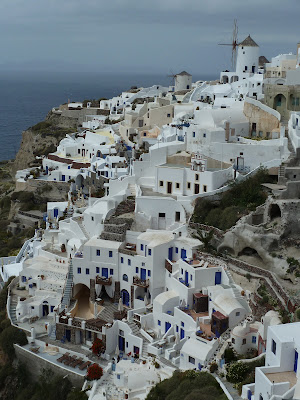Hi all,
I still need to fill you all in on Vienna and Budapest but I wanted to let everyone know what's my plans are for the last leg of my trip. I am currently in Budapest but (hopefully) Monday morning I will be able to pickup my Tourist Visa to visit China! I procrastinated turning in my paperwork at the Chinese Embassy and so I can't pick it up until tomorrow. I fly out Monday night for Copenhagen, Denmark where I board the Norwegian Sun for a 9 day cruise of the Baltic Sea. Hmmm...I cut that a little close.
I tried (unsuccessfully) to get a tourist Visa for Russia so the only other way to visit Saint Petersburg, Russia is via cruise ship. I picked a cruise that had two full days in St. Petersburg and single day ports of call in Germany, Estonia, Finland and Sweden. In order to see St. Petersburg, I must take tours offered by the cruise line but they offer about 20 different tours that cover all the highlights. I'm excited. I really didn't know if I would get to see Russia or not.
I arrive back in Copenhagen and will get my Visa for India there. Again, hopefully! After I have my India Visa in hand I leave for Beijing China where my plan is to take the Qingzang (high elevation) train from Beijing to Lhasa, Tibet and then do a tour of Tibet. Tickets for the train go on sale around 10 days early so I won't know until after the cruise if I got train tickets. Cross your fingers!
After China I fly to Delhi, India and tour northern India sights (Golden Triangle) and then I plan on flying to Southern India - Mumbai, Goa, Cochin depending on time. I've booked my return flight from Delhi to LAX via Chicago. I arrive at LAX and later that day fly to Reno, Nevada to see my Mom for a few days. Then back to Ventura - Home, Sweet, Home!
Shari
I still need to fill you all in on Vienna and Budapest but I wanted to let everyone know what's my plans are for the last leg of my trip. I am currently in Budapest but (hopefully) Monday morning I will be able to pickup my Tourist Visa to visit China! I procrastinated turning in my paperwork at the Chinese Embassy and so I can't pick it up until tomorrow. I fly out Monday night for Copenhagen, Denmark where I board the Norwegian Sun for a 9 day cruise of the Baltic Sea. Hmmm...I cut that a little close.
I tried (unsuccessfully) to get a tourist Visa for Russia so the only other way to visit Saint Petersburg, Russia is via cruise ship. I picked a cruise that had two full days in St. Petersburg and single day ports of call in Germany, Estonia, Finland and Sweden. In order to see St. Petersburg, I must take tours offered by the cruise line but they offer about 20 different tours that cover all the highlights. I'm excited. I really didn't know if I would get to see Russia or not.
I arrive back in Copenhagen and will get my Visa for India there. Again, hopefully! After I have my India Visa in hand I leave for Beijing China where my plan is to take the Qingzang (high elevation) train from Beijing to Lhasa, Tibet and then do a tour of Tibet. Tickets for the train go on sale around 10 days early so I won't know until after the cruise if I got train tickets. Cross your fingers!
After China I fly to Delhi, India and tour northern India sights (Golden Triangle) and then I plan on flying to Southern India - Mumbai, Goa, Cochin depending on time. I've booked my return flight from Delhi to LAX via Chicago. I arrive at LAX and later that day fly to Reno, Nevada to see my Mom for a few days. Then back to Ventura - Home, Sweet, Home!
Shari








































